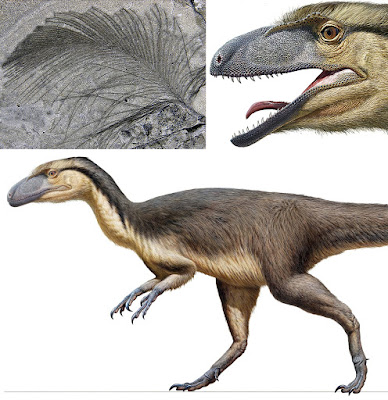[Most Recent Entries] [Calendar View]
Tuesday, November 12th, 2019
| Time | Event | ||
| 9:45a | [Mammalogy • 2019] Camera-trap Evidence that the Silver-backed Chevrotain Tragulus versicolor remains in the wild in Vietnam
Abstract In an age of mass extinctions, confirming the survival of lost species provides rare second chances for biodiversity conservation. The silver-backed chevrotain Tragulus versicolor, a diminutive species of ungulate known only from Vietnam, has been lost to science for almost three decades. Here, we provide evidence that the silver-backed chevrotain still exists and the first photographs of the species in the wild, and urge immediate conservation actions to ensure its survival. An Nguyen, Van Bang Tran, Duc Minh Hoang, Thi Anh Minh Nguyen, Dinh Thang Nguyen, Van Tiep Tran, Barney Long, Erik Meijaard, Jeff Holland, Andreas Wilting and Andrew Tilker. 2019. Camera-trap Evidence that the Silver-backed Chevrotain Tragulus versicolor remains in the wild in Vietnam. Nature Ecology & Evolution. nature.com/articles/s41559-019-1027-7 NatureEcoEvoCommunity.nature.com/u Search for the silver-backed chevrotain NatureEcoEvoCommunity.nature.com/users/3 Silver-Backed Chevrotain, With Fangs And Hooves, Photographed In Wild For First Time tinyurl.com/yx86b4wo Scientists rediscover mammalian oddity in remote Vietnam https://news.mongabay.com/2019/11/scient | ||
| 11:20a | [Paleontology • 2019] A Polar Dinosaur Feather Assemblage from Australia
Highlights: • Fossil feathers from the Koonwarra Fossil Bed in southeastern Australia record the first demonstrable dinosaur (including birds) integumentary structures described from the Mesozoic polar regions. • This diverse range of non-avian theropod (paravian) and bird feathers more than doubles the number of Mesozoic fossil feather specimens and morphologies recovered from the Gondwanan landmasses to date. • Possible traces of eumelanosomes imply original dark colouration and patterning. Some of the geologically oldest barbicel-like structures also evince advanced avian-grade flight feather morphologies in the Early Cretaceous. ABSTRACT Exceptionally preserved Mesozoic feathered dinosaur fossils (including birds) are famous, but recognized from only very few localities worldwide, and are especially rare in the Southern Hemisphere. Here we report an assemblage of non-avian and avian dinosaur feathers from an Early Cretaceous polar (around 70°S) environment in what is now southeastern Australia. The recovered remains incorporate small (10–30 mm long) basal paravian-like tufted body feathers, open-vaned contour feathers, and asymmetrical bird-like wing feathers that possess high-angled barbs with possible remnants of barbicels — amongst the geologically oldest observed to date. Such morphological diversity augments scant skeletal evidence for a range of insulated non-avian theropods and birds inhabiting extreme southern high-latitude settings during the Mesozoic. Although some of these fossil feathers exhibit what may be residual patterning, most are uniformly toned and preserve rod-shaped microbodies, as well as densely-packed microbody imprints on the barbules that are structurally consistent with eumelanosomes. Geochemical analysis detected no identifiable residual biomolecules, which we suspect were lost via hydrolysis and oxidization during diagenesis and weathering. Nevertheless, an originally dark pigmentation can be reasonably inferred from these melanic traces, which like the coloured feathers of modern birds, might have facilitated crypsis, visual communication and/or thermoregulation in a cold polar habitat. Keywords: Mesozoic birds, Aves, Paravesmelanosomes, Early Cretaceous Martin Kundrát, Thomas H. Rich, Johan Lindgren, Peter Sjövall, Patricia Vickers-Rich, Luis M. Chiappe and Benjamin P. Kear. 2019. A Polar Dinosaur Feather Assemblage from Australia. Gondwana Research. In Press. DOI: 10.1016/j.gr.2019.10.004 First evidence of feathered polar dinosaurs found in Australia - Uppsala University mynewsdesk.com/uk/uu/pressreleases/first-e |
| << Previous Day |
2019/11/12 [Calendar] |
Next Day >> |












